Ferry service getting worse admits Calmac boss
- Published
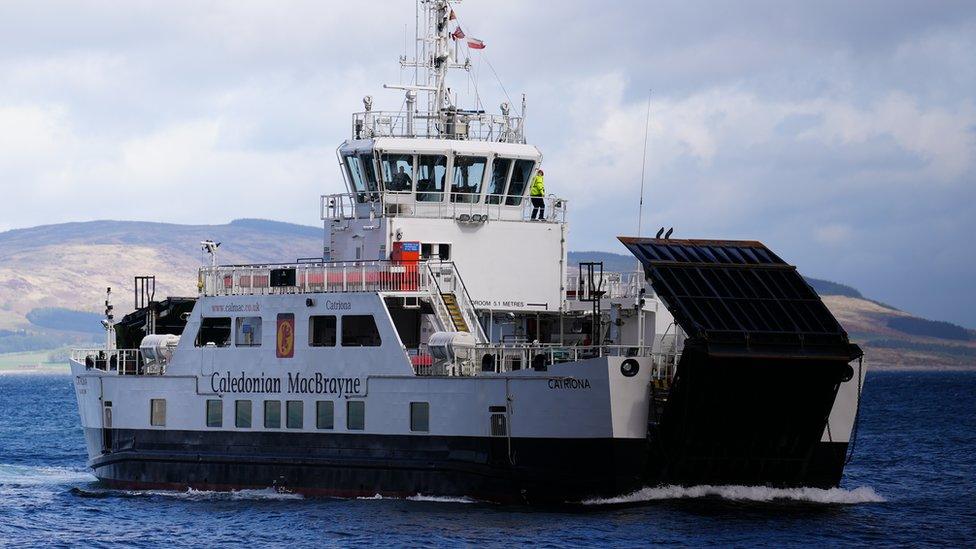
The head of Scotland's state-owned ferry network has admitted the service is getting worse.
Most islands in the west of Scotland rely on services from Caledonian MacBrayne, which operates 34 vessels - the largest fleet in the UK.
CalMac boss Robbie Drummond told the BBC rising passenger numbers, more intense storms and a failure to launch new vessels had led to problems.
He said passengers' experience of the ferries was worse than in the past.
Last month the island of Arran lost the 29-year-old MV Caledonian Isles for nearly a fortnight because of an engine problem.
Then the 33-year-old MV Lord of the Isles, which serves South Uist, was withdrawn from service for maintenance, and the MV Hebrides, which connects Skye, North Uist and Harris in the "Uig triangle", was damaged when it struck a pier.

Calmac boss Robbie Drummond said passengers' experience of the ferries was worse than in the past
Mr Drummond apologised to passengers on these Clyde and Hebridean routes who have told the BBC of their despair at recent disruption.
"All I can say is sorry," he said. "We are doing our absolute utmost to deliver a resilient service."
Two new major ferries which are under construction at the nationalised Ferguson's shipyard in Port Glasgow are running five years late and are £150m over budget.
One - Glen Sannox - is for the Arran route and the other is destined for the Uig triangle.
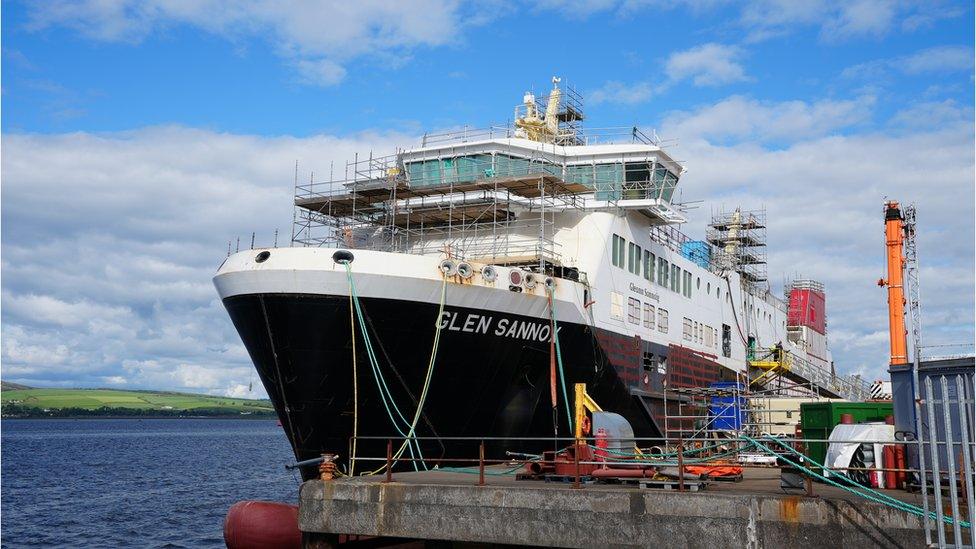
The Glen Sannox is one of two ferries under construction at Ferguson's shipyard
Opposition parties say First Minister Nicola Sturgeon should shoulder the blame for the fiasco.
The Scottish government said its absolute priority was completing these vessels and getting them out into service for the island communities which rely on them.
Domino effect
Christina Morrison, who runs a meal delivery business and coffee shop near South Uist's Lochboisdale ferry terminal, is furious.
She said: "We had the ferry pulled for three months at the beginning of the year so that wasn't a great start."
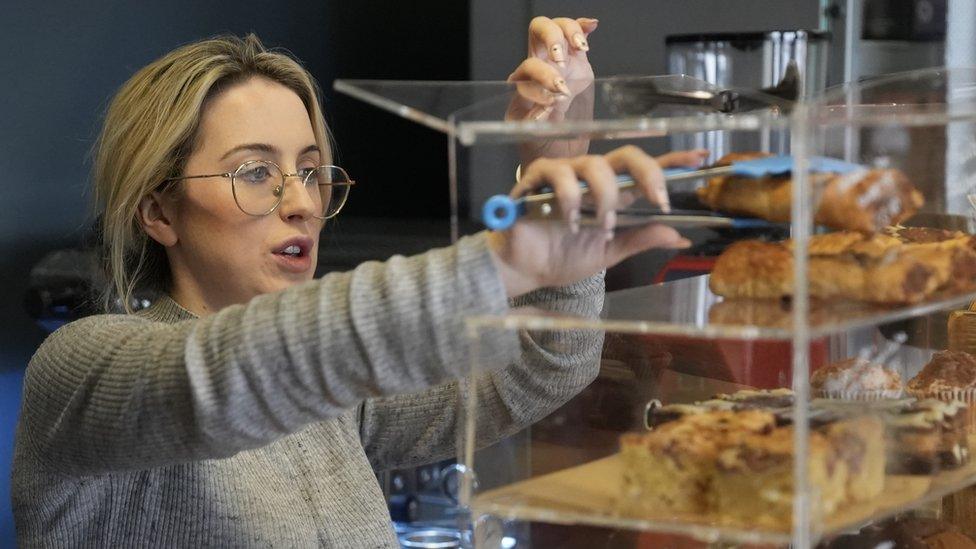
Christina Morrison runs a coffee shop near South Uist ferry terminal
With the service suspended again there is no passing trade from passengers, laments Ms Morrison.
"We're losing about £200 to £300 per sailing," she explains, adding "the domino effect this has on the economy as a whole is devastating."
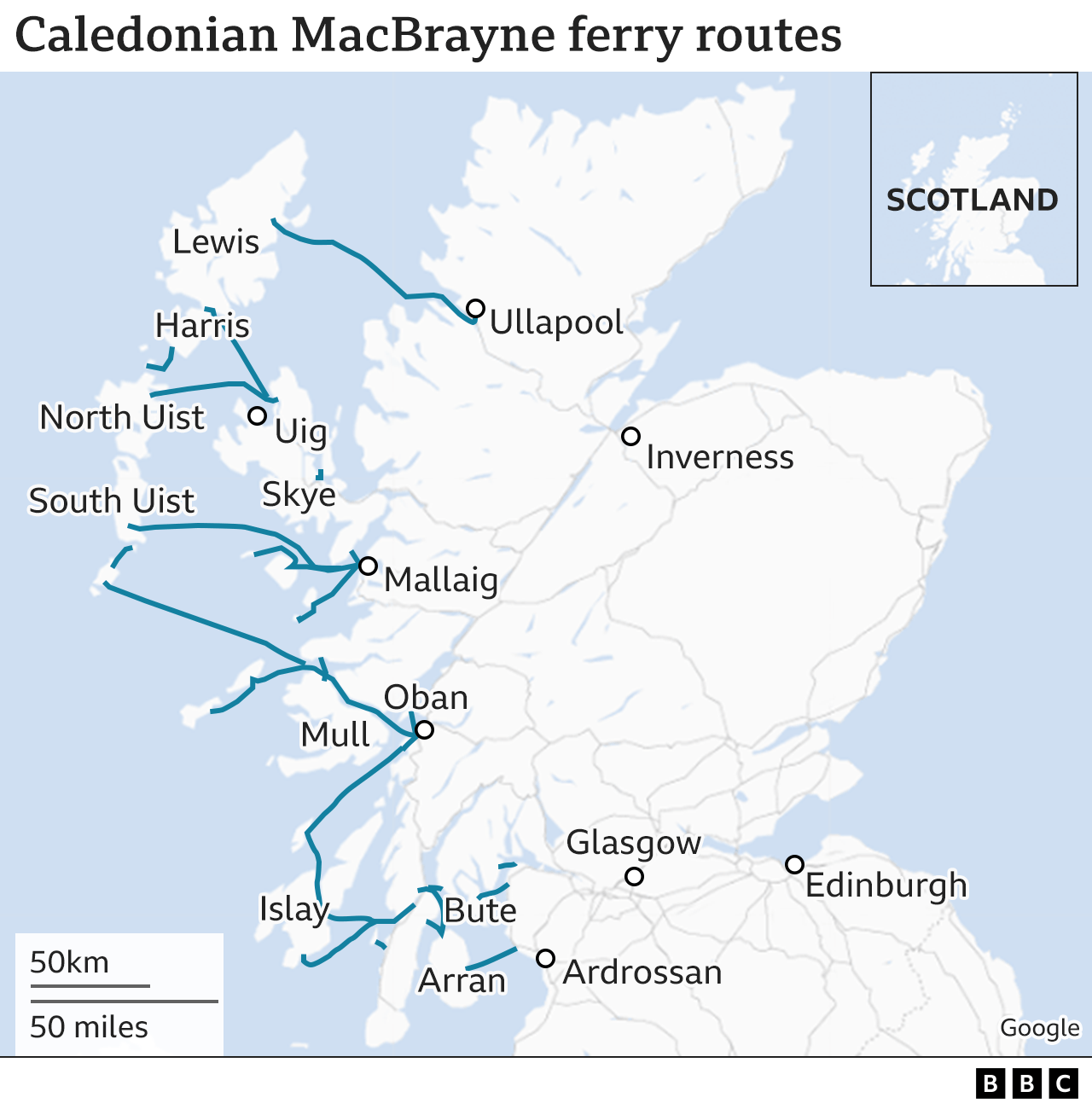
When the service works, South Uist is linked to the mainland by a year-round three-and-a-half hour crossing to Mallaig, plus a longer trip to Oban in the summer.
If those sailings are off, islanders must travel by causeway to North Uist and try their luck on the busy service from Lochmaddy to Uig on the Isle of Skye.
But Highland Council is planning to close the harbour at Uig for upgrading, external for nearly six months this winter.
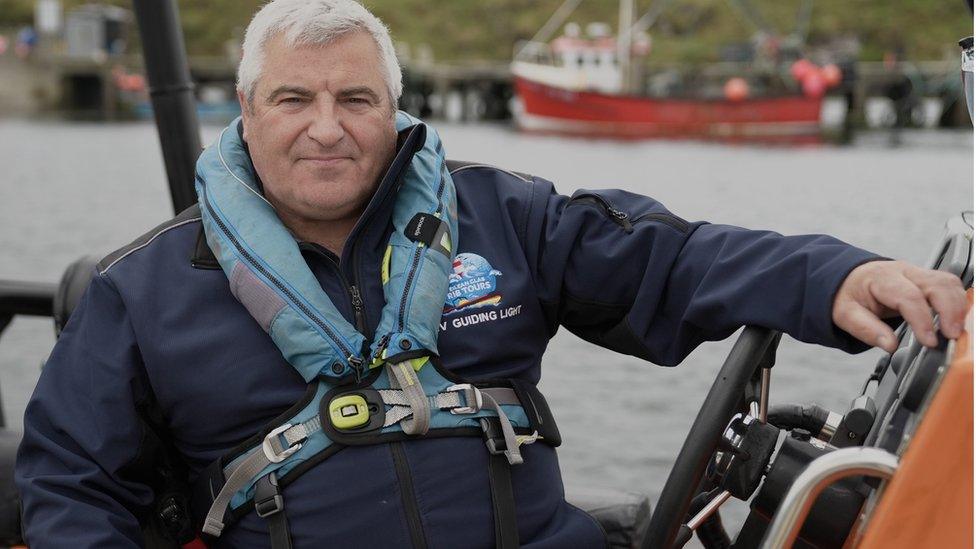
Kenny MacLeod says closing the harbour will devastate the economy
"It's going to devastate our economy," says Kenny MacLeod who runs Eilean Glas boat tours on Scalpay, across a bridge from Harris.
Not so long ago Calmac was revered in the island, Mr MacLeod says. "Everybody was very proud of the ferry service," he says.
Now, though, he says the way the company is treating the island is "just shambolic".
Road equivalent tariff
It is not just the ageing ferries that are causing the lack of capacity.
Another explanation is the Scottish government's introduction just over a decade ago of a subsidised fare structure known as the road equivalent tariff (RET) designed to support and promote island life and tourism.
The policy costs the Scottish government £25m per year, external and is popular among many islanders.
It led to a sharp rise in passenger and vehicle traffic on board the ferries - up more than 50% in the past few years, according to Mr Drummond - providing a boost to the islands' economy but also pushing the transport network to its limits.
"People are investing lots of money in new businesses," says Mr MacLeod. "Harris is buzzing in many ways but now they're struggling to get here."
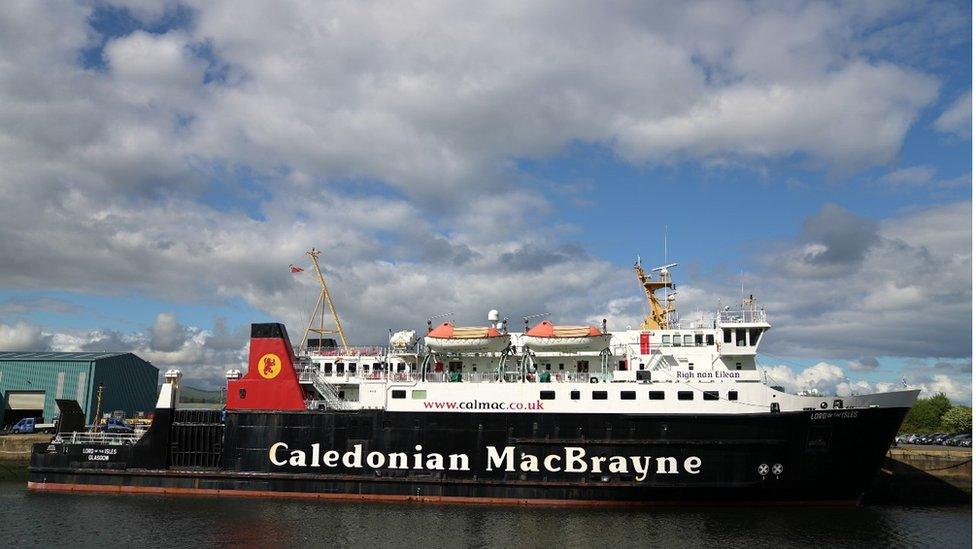
The CalMac ferry Lord of the Isles is currently being repaired in Greenock
CalMac won its latest eight-year contract to operate lifeline ferry services, external on behalf of the Scottish government in 2016, promising that by "further increasing reliability" it would deliver "an enhanced service" with "even higher levels of customer satisfaction."
Mr Drummond said he accepted that it had failed to keep those promises but he added that with no spare ferries, every time a vessel has to be repaired, disruption was inevitable.
Speaking at the firm's headquarters in Gourock on the Firth of Clyde, Mr Drummond urged ministers to urgently accelerate and expand a programme to build new ferries.
He pointed out that the average age of the fleet is 23 years and a third of the network's 34 vessels are operating beyond their life expectancy, meaning breakdowns are becoming more common.
Of the 10 largest ferries, four are more than 30 years old and the MV Isle of Arran is 39.

Mr Drummond said the company is spending 70% more on maintenance than it did five years ago - £34m this year.
He said current investment in new ferries "will have to be supplemented" and a standard design may be necessary so that boats can be switched between routes more easily.
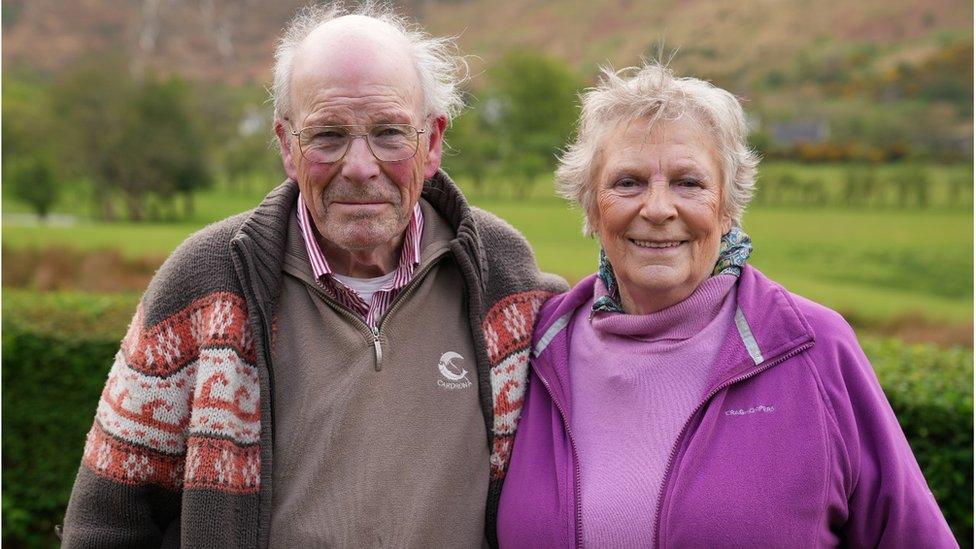
Ian and Betty Buchanan live in Lochranza on Arran
Retired couple Betty and Ian Buchanan, who live in Lochranza on Arran, told the BBC a lack of ferry capacity had made it hard for them to get to hospital appointments on the mainland.
"Very often in the summertime, it's space," said Mrs Buchanan. "There's no space on the ferry."
"And it's breaking down a lot," she added.
CalMac said it would always prioritise passengers who needed to travel for medical reasons.
Spending every penny
Calmac is responsible for running and maintaining the service but the ferries themselves are owned by its sister organisation, Caledonian Maritime Assets Ltd (Cmal), which is also in charge of procuring and designing new vessels.
Kevin Hobbs, chief executive of CMAL, said he sympathised with island communities and understood their frustrations.
Mr Hobbs said it was spending every penny it was given by the Scottish government on improving the network.
He said ministers' five-year commitment of £580m would allow it to speed up plans, and projects to replace 15 vessels are now live, including five of the major ones.
Both CalMac and CMAL are wholly owned by the Scottish government and directed by its agency, Transport Scotland.
This is an arrangement which has drawn criticism for its complexity and is currently being reviewed.
Transport Scotland said it was working with CalMac and CMAL to try to find potential second-hand ferries to improve resilience on the Clyde and Hebrides ferry routes.
It has previously chartered the MV Arrow and recently bought MV Utne, a medium-sized Norwegian ferry for the Craignure to Oban route.
A £105m order for the next two big ships - for the Islay route - has now been signed with a Turkish shipyard and, if all goes to plan, they should be delivered in 2024/2025.
Related topics
- Published13 May 2022
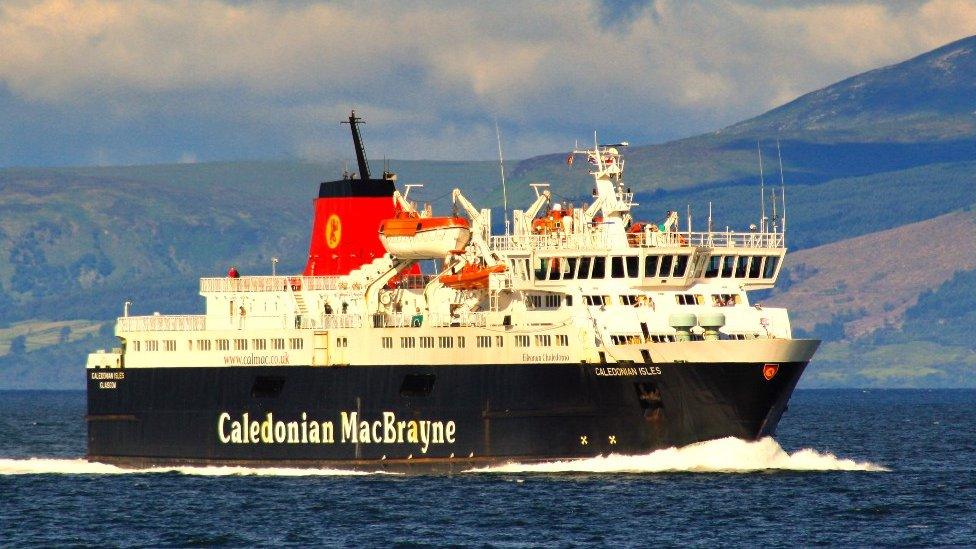
- Published23 March 2022
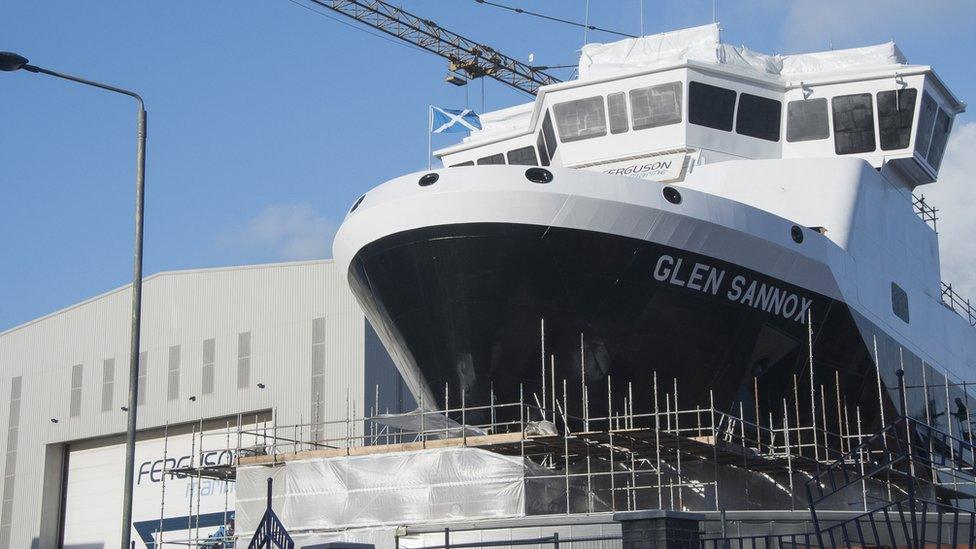
- Published19 May 2022
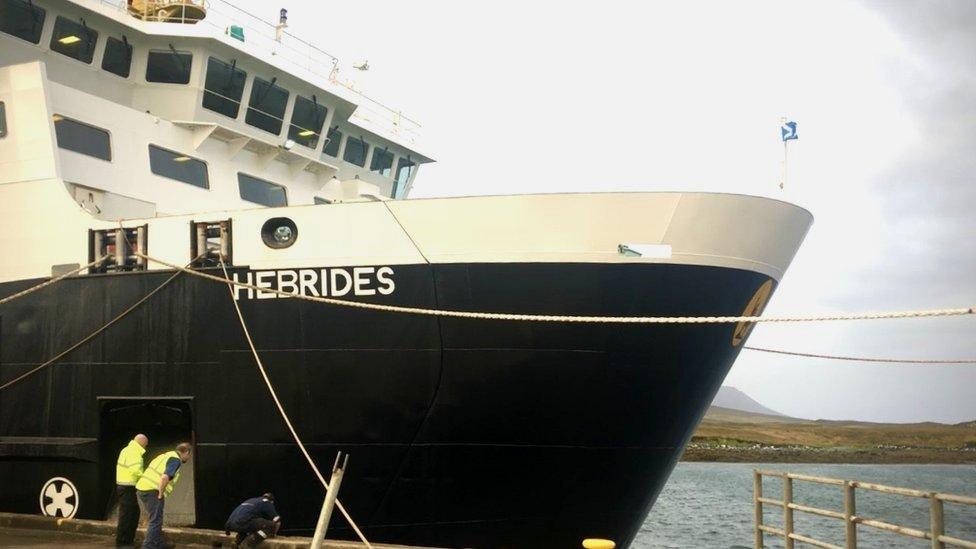
- Published29 April 2022
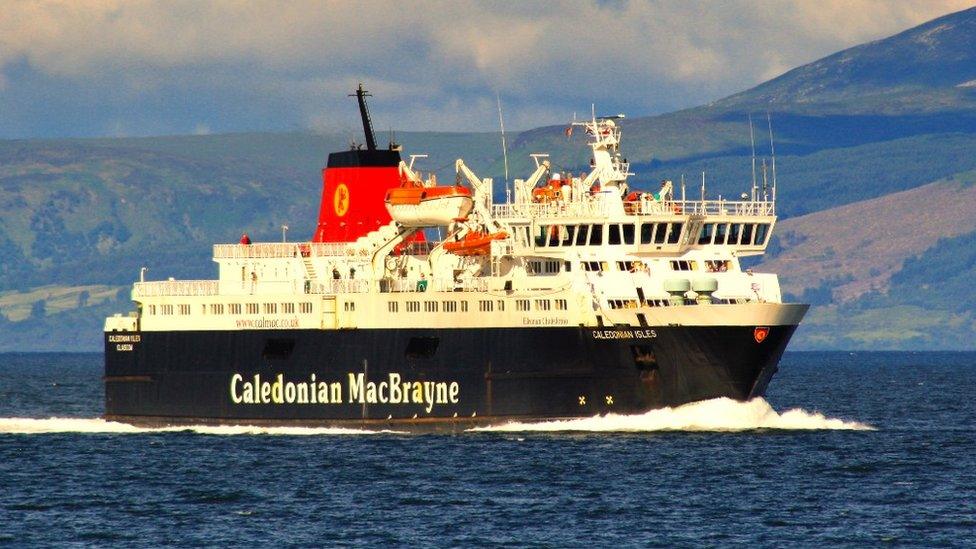
- Published20 May 2022
